PipingProjects.eu is one of the leading Steel Pipe Manufacturer in Europe. Cylindrical tubes, also known as Steel Pipes, are often made of steel, a very durable and adaptable metal alloy comprised mostly of iron and carbon, with different proportions of manganese, nickel, chromium, and molybdenum added. Steel Pipes are designed to convey fluids, gases, and solids, and they are widely used in a variety of industries and applications due to their exceptional strength, durability, and adaptability. We are a well-known Steel Pipe Supplier in Europe.
Steel Pipes are precisely made utilizing modern manufacturing processes to ensure consistent quality and endurance. Our cutting-edge production facilities use cutting-edge technology to fulfill high industry requirements, ensuring consistent performance in a wide range of conditions.
In addition to their durability, our Steel Pipes are designed for smooth connection, making installation easier and reducing the chance of leakage. The pipes' smooth inside surfaces improve fluid flow, reduce friction, and maximize operating efficiency in fluid transport systems.

Does this product seem useful to you?
Reach out to us now for quick support.
Trusted
Supplier
Genuine
Product
Easy
purchase
Steel Pipe Specification Chart
| Particulars | Specification | |
|---|---|---|
| Pipes | 1/2" NB - 24" NB | |
| ERW Pipes | 1/2" NB - 24" NB | |
| EFW Pipes | 6" NB - 100" NB | |
| Tubing Size | 1/8″NB TO 30″NB IN | |
| Specialized in | Large Diameter Size | |
| Schedule | SCH5, SCH10, SCH20, SCH30, SCH40, Std, SCH80, XS, SCH60, SCH80, SCH120, SCH140, SCH160, XXS | |
| Type | Seamless, ERW, Welded, Fabricated, LSAW Pipes | |
| Form | Round, Square, Rectangular, Hydraulic Etc | |
| Length | Single Random, Double Random & Cut Length | |
| End | Plain End, Beveled End, Treaded | |
| Grade | ||
| Stainless Steel | 200 Series - 201, 202, 205.
300 Series 301, 302, 303, 304, 304L, 308, 309, 309S, 310, 310S, 314, 316, 316L, 316TI, 317, 317L, 321, 347. 400 Series 405, 409, 429, 430, 430F, 430FSe, 434, 436, 442, 446, 403, 410, 414,416, 416Se, 420,420F, 422, 431, 440A, 440B, 440C. 500 Series - 501, 502. 600 Series - 630 (17-4 PH). |
|
| Carbon Steel | ASTM A106 Gr. A , B & C API 5L Gr. A / B, X42 ,X52 ,X60 ASTM A 53 Gr. A/B | |
| Titanium | Titanium 6-4, Gr 1, Gr 2, Gr 3, Gr 4, Gr 5, Gr 7, Gr 9, 5-2.5, 6-2-4-2, 6-4 ELI, 6-6-2. | |
| Hastelloy | C22, C276, X, B-2. | |
| Monel | 400, K500. | |
| Nickel Alloy | Nickel 200 Nickel 201, Alloy 20, Alloy 286, Alloy 218 (Nitronic 60), Nitronic 50 (XM-19). | |
| Cupro Nickel | Cu 90-10 (C70600,CW352H), Cu 70-30 (C71500, CW354H). | |
| Inconel | 601, 625, 660A, 718, X-750, 825, 925, 608. | |
| Duplex / Super Duplex | D S31803, D S32205, SD S32750, SD S32760, SD S32950. | |
| Chromium Molybdenum Steel | A387 Gr 2, A387 Gr 12, A387 Gr 11, A387 Gr 22, A387 Gr 22L, A387 Gr 7, A387 Gr 21, A387 Gr 21L, A387 Gr 9, A387 Gr 91. | |
| Nichrome Alloy | CrNi 20/80. | |
| Copper | ASTM B1, ASTM B2, ASTM B3, ASTM B152, ASTM B124, ASTM B133. | |
| Brass | Alloy 260, Alloy 272, Alloy 330, Alloy 353, Alloy 360, Alloy C48200 - C48500, Alloy 464. | |
| Bronze | Alloy 954, Alloy 933. | |
| Case Hardening Steels | 10C4, 15C8, 15Cr3, 16Mn5Cr4, 20MnCr5, 15Ni5Cr4Mo1, 15Ni5Cr4Mo2, 20Ni7Mo2, 20NiCrMo2, 14CrNi6. | |
| En Series | En8, En9, En19, En24, En30B, En31, En36, En45, En47, En48. | |
| Mild Steel | Sae 4118, Sae 4120, Sae 4120, Sae 4130, Sae 4135, Sae 4137, Sae 4140, Sae 4142, Sae 4145, Sae 4147, Sae 4150, Sae 4161, Sae 8620. | |
What is the Difference Between Steel Pipe & Tube?
Steel Pipe Material, Specification & Thickness
PipingProjects.eu is a top Steel Pipe Manufacturer in Europe, provides a diverse choice of goods with varying specifications to accommodate different sizes and grades.
| Specification | Material Grade | Size Range (NPS) | Wall Thickness | Application |
|---|---|---|---|---|
| ASTM A53 | A, B | 1/8" - 26" | Sch 10, 40, 80 | General Purpose, Plumbing, HVAC |
| ASTM A106 | A, B, C | 1/8" - 48" | Sch 10, 20, 30, 40, 80, 160 | High-Temperature Service |
| ASTM A333 | 1, 3, 6, 8 | 1/8" - 26" | Sch 40, 80 | Low-Temperature Service |
| ASTM A335 | P1, P5, P9, P11, P12, P22, P91 | 1/8" - 26" | Sch 10, 20, 30, 40, 80, 160 | High-Temperature Service (Alloy Steel) |
| API 5L | X42, X52, X60, X65, X70 | 1/8" - 60" | Sch 10, 20, 30, 40, 80 | Oil & Gas Transportation |
| ASTM A312 | TP304, TP316, TP321 | 1/8" - 24" | Sch 5, 10, 40, 80 | High-Temperature & Corrosive Fluids |
| ASTM A500 | Grade A, B, C | 1/2" - 24" | 0.120" - 0.625" | Structural & Mechanical Tubing |
| ASTM A554 | TP304, TP316 | 1/2" - 12" | 0.035" - 0.500" | Ornamental & Structural Tubing |
| DIN 2440 | St33 | 6mm - 150mm | 1mm - 5.4mm | General Purpose (European Standard) |
Steel Pipe Size Chart
Explore our comprehensive Steel Pipe Size Chart, which has been rigorously selected to meet a broad range of applications and demonstrates our dedication to precision and quality as a top Steel Pipe Manufacturer in Europe.
| Nominal Pipe Size | ID | OD | Wall Thickness | Weight (LB/FT) |
|---|---|---|---|---|
| 1/2 | 0.622" | 0.840" | 0.109" | 0.85 lb/ft |
| 1/4 | 0.364 | 0.540' | 0.088" | 0.42 lb/ft |
| 1/8 | 0.269" | 0.405" | 0.068" | 0.24 lb/ft |
| 3/4 | 0.824" | 1.050" | 0.113" | 1.13 lb/ft |
| 3/8 | 0.493" | 0.675" | 0.091" | 0.57 lb/ft |
| 1 | 1.049" | 1.315" | 0.133" | 1.68 lb/ft |
| 1-1/2 | 1.610" | 1.900" | 0.145" | 2.72 lb/ft |
| 1-1/4 | 1.380" | 1.660" | 0.140" | 2.27 lb/ft |
| 2 | 2.067" | 2.375" | 0.154" | 3.65 lb/ft |
| 2-1/2 | 2.469" | 2.875" | 0.203 | 5.79 lb/ft |
| 3 | 3.068" | 3.500" | 0.216" | 7.58 lb/ft |
| 3-1/2 | 3.548" | 4.000" | 0.226" | 9.11 lb/ft |
| 4 | 4.026" | 4.500" | 0.237 | 10.79 lb/ft |
| 6 | 6.065" | 6.625" | 0.280" | 18.97 lb/ft |
| 5 | 5.047 | 5.563" | 0.258 | 14.62 lb/ft |
| 8 | 7.981" | 8.625" | 0.322" | 28.55 lb/ft |
| 12 | 11.938" | 12.75" | 0.406" | 53.52 lb/ft |
| 10 | 10.020" | 10.750 | 0.365 | 40.48 lb/ft |
| 14 | 13.124" | 14.000" | 0.438" | 63.50 lb/ft |
| 18 | 16.876" | 18,000" | 0.562" | 104.70 lb/ft |
| 16 | 15.000" | 16.000" | 0.500" | 82.77 lb/ft |
| 20 | 18.812" | 20,000" | 0.594" | 123.10 lb/ft |
| 24 | 22.624" | 24.000" | 0.688" | 171.30 lb/ft |
What is the Difference Between Schedule and Nominal Pipe Size (NPS)?
What is the Difference Between Hot Rolled and Cold Rolled Steel Pipe?
Steel Pipe Equivalent Grades
| Material Type | ASTM/ASME (USA) | EN (Europe) | DIN (Germany) | BS (UK) | JIS (Japan) | ISO (International) |
|---|---|---|---|---|---|---|
| Carbon Steel | A36 | S235JR | ST37-2 | 40A/B | SS400 | ISO 630-2 S235 |
| Stainless Steel | 304/304L | 1.4301/1.4307 | X5CrNi18-10 | 304S15 | SUS304 | ISO 15510 X5CrNi18-10 |
| 316/316L | 1.4401/1.4404 | X5CrNiMo17-12-2 | 316S31 | SUS316 | ISO 15510 X5CrNiMo17-12-2 | |
| Aluminium | 6061 | EN AW-6061 | AlMg1SiCu | H20 | AA6061 | ISO 6361 6061 |
| Copper | C11000 | Cu-ETP | E-Cu58 | C101 | C1100 | ISO 13388 Cu-ETP |
PipingProjects.eu is a leading Steel Pipe Supplier in Europe. Here are a few examples of Steel Pipes seen in Piping Projects in Europe.
Steel Pipe Weight Chart
| Nominal Bore | Outside Diameter | Light Thickness Weight | Medium Thickness Weight | Heavy Thickness Weight | |||||
|---|---|---|---|---|---|---|---|---|---|
| Inch | mm | Inch | mm | mm | kg/mtr | mm | kg/mtr | mm | kg/mtr |
| 1/8″ | 3 mm | 0.406 | 10.32 | 1.80 | 0.361 | 2.00 | - | 2.65 | 0.493 |
| 1/4″ | 6 mm | 0.532 | 13.49 | 1.80 | 0.517 | 2.35 | 0.407 | 2.90 | 0.769 |
| 3/8″ | 10 mm | 0.872 | 17.10 | 1.80 | 0.674 | 2.35 | 0.852 | 2.90 | 1.02 |
| 1/2″ | 15 mm | 0.844 | 21.43 | 2.00 | 0.952 | 2.65 | 1.122 | 3.25 | 1.45 |
| 3/4″ | 20 mm | 1.094 | 27.20 | 2.35 | 1.410 | 2.65 | 1.580 | 3.25 | 1.90 |
| 1″ | 25 mm | 1.312 | 33.80 | 2.65 | 2.010 | 3.25 | 2.440 | 4.05 | 2.97 |
| 1.1/4″ | 32 mm | 1.656 | 42.90 | 2.65 | 2.580 | 3.25 | 3.140 | 4.05 | 3.84 |
| 1.1/2″ | 40 mm | 1.906 | 48.40 | 2.90 | 3.250 | 3.25 | 3.610 | 4.05 | 4.43 |
| 2″ | 50 mm | 2.375 | 60.30 | 2.90 | 4.110 | 3.65 | 5.100 | 4.47 | 6.17 |
| 2.1/2″ | 65 mm | 3.004 | 76.20 | 3.25 | 5.840 | 3.65 | 6.610 | 4.47 | 7.90 |
| 3″ | 80 mm | 3.500 | 88.90 | 3.25 | 6.810 | 4.05 | 8.470 | 4.85 | 10.1 |
| 4″ | 100 mm | 4.500 | 114.30 | 3.65 | 9.890 | 4.50 | 12.10 | 5.40 | 14.4 |
| 5″ | 125 mm | 5.500 | 139.70 | – | – | 4.85 | 16.20 | 5.40 | 17.8 |
| 6″ | 150 mm | 6.500 | 165.10 | – | – | 4.85 | 19.20 | 5.40 | 21.2 |
Production Process of Steel Pipe
Steel Pipe is produced in seven steps. It manufactures a wide range of shapes, goods, and parts, ranging from Steel Pipe and Coil.
How do You Prevent Steel Pipes from Rusting?
Steel Pipe Used in Industries

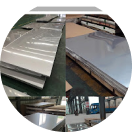
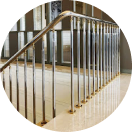
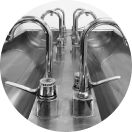
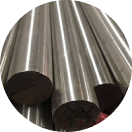
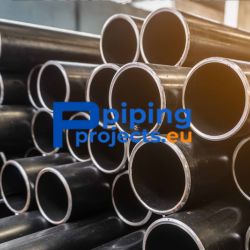
Steel Pipe Manufacturer in Europe
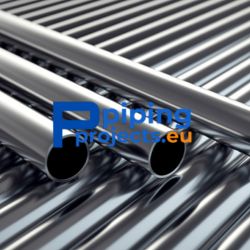
Steel Pipe Supplier in Europe
